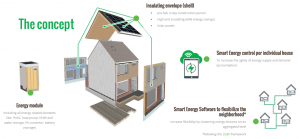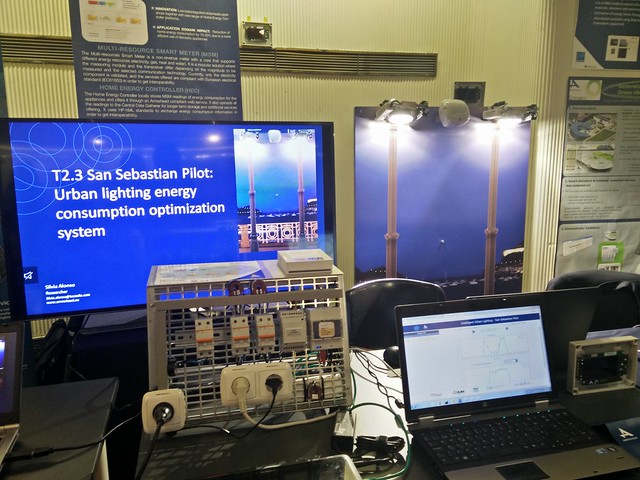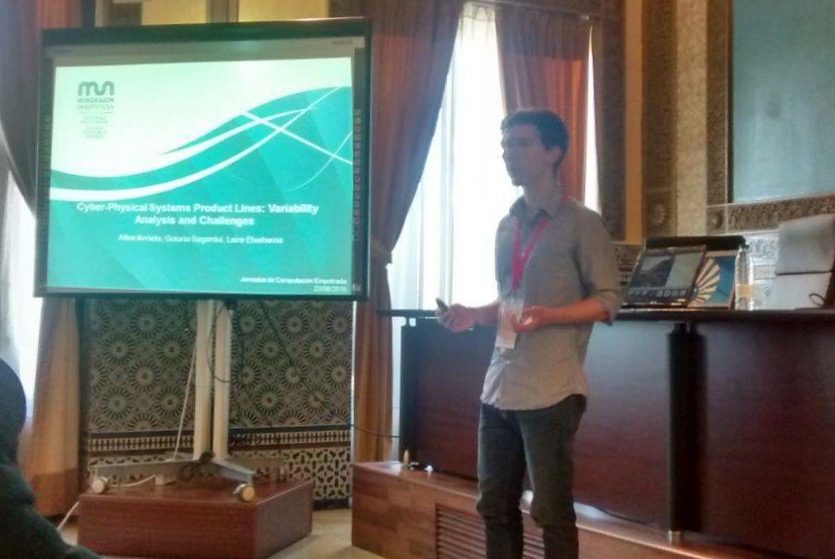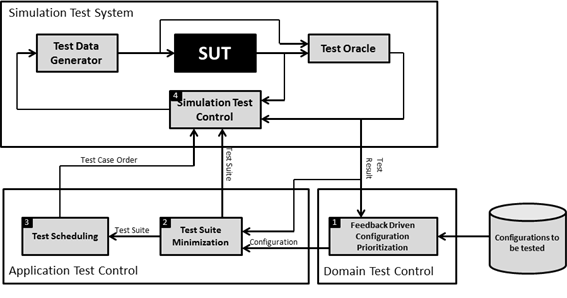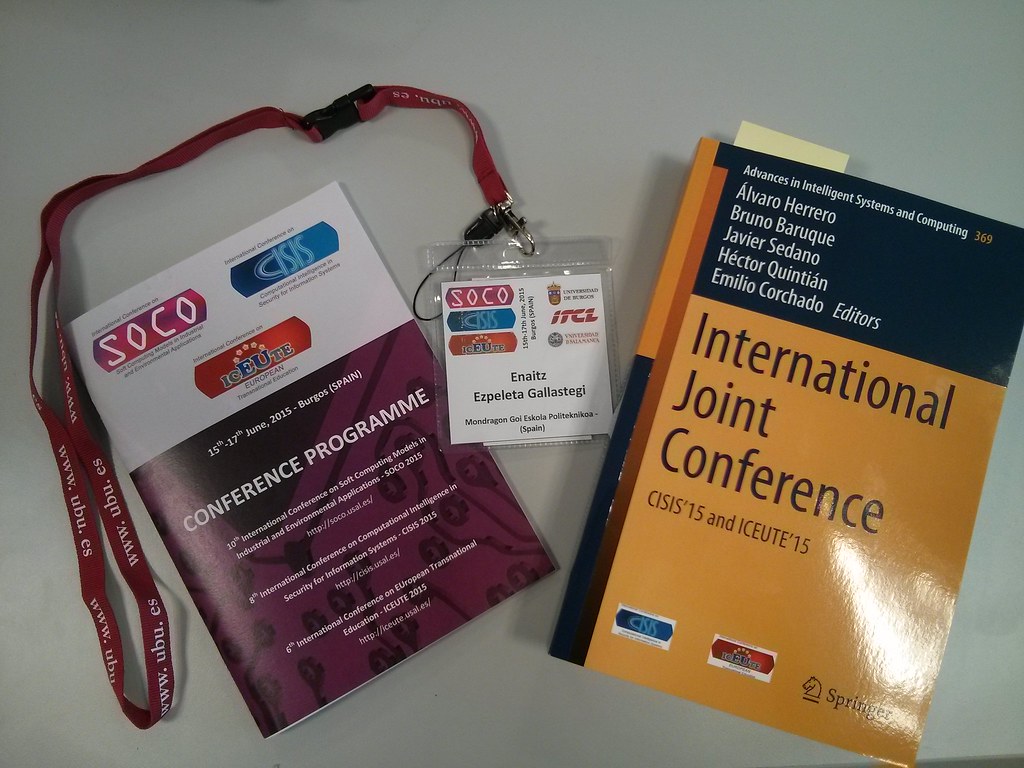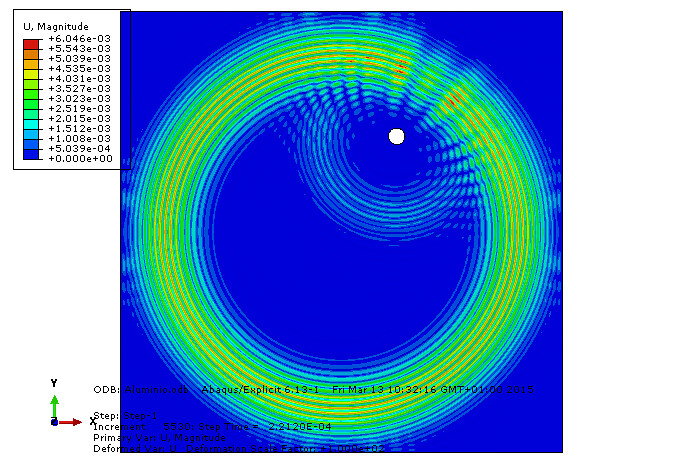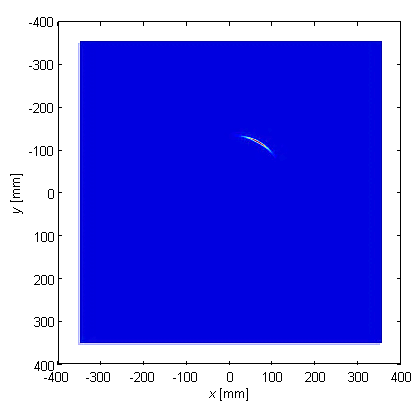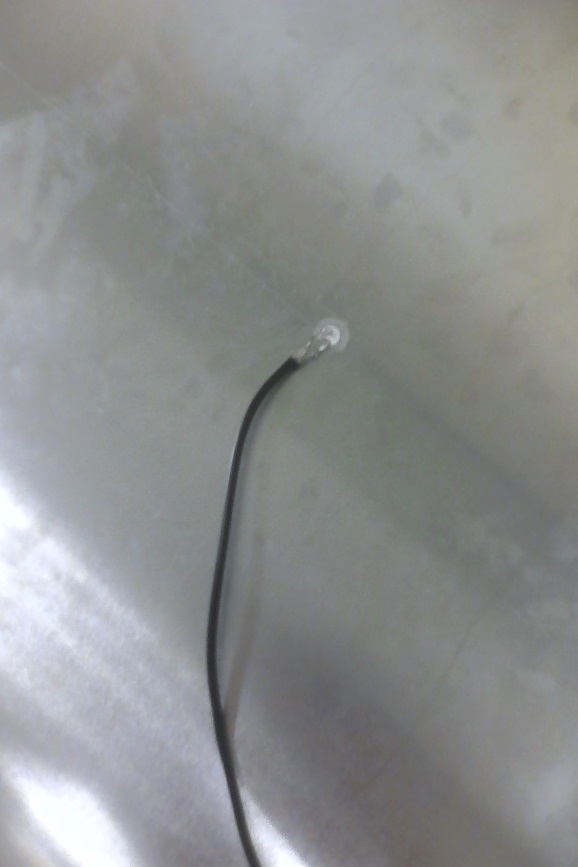REnnovates is a European project co-funded by the European Commission in the H2020 Programme which mission is to contribute to society by reducing the environmental impact of (domestic) energy consumption and maximizing the effective use of renewable energy.
REnnovates is a holistic systemic deep renovation concept using smart services and developing smart energy-based communities resulting in energy-neutral housing – up to and beyond Zero Net Energy – by reducing energy consumption and maximizing the use of renewable energy. The concept outlined in the figure, comprises an insulating envelope (shell), an Energy Module provision with a heat pump and to provide heating and Domestic Hot Water (DHW), solar panels, devices to connect to the grid and IT equipment to connect the Energy Module to the REnnovates Cloud. This Cloud enables monitoring and smart energy control not only per individual house but also at neighbourhood level.
The REnnovates project started September 2015, evaluating the potential of the three demo sides, i.e. the Netherlands, Spain and Poland. The demo in Netherlands is oriented towards the impact of a renovated district on the electric grid, whilst the Polish demo is to analyse the impact on a district heating network. The Spanish demo evaluates the design, construction and implementation of the energy module concept in Spain.
Nine partners from six countries take part in the project; BAM (leader) and Stedin from the Netherlands, VITO, Enervalis and Belfius from Belgium, KEO from Germany, Massive Cell from Finland, Mostostal from Poland and Mondragon Corporation from Spain. Mondragon Unibertsitatea and LKS Ingenieria participate in the project as Mondragon Corporation´s third parties.
The team at Mondragon Unibertsitatea is formed by researchers for the Software Engineering and Web Engineering, the Signal Theory and Communications and the Electric Energy research groups.
Objectives
The aim for the Spanish demonstrator is to validate business models considering Spanish legislation and to design, construct and integrate an energy module comprising several residential flats. The specific objectives are:
- Evaluate business models for the REnnovates concept in Spain.
- Demonstration and design of the Spanish energy module related to integration with both the electric grid and the district heating network.
- Continuous commissioning demonstration.
- Analyze and validate the aggregator in the Spanish energy setting.
Business Model / Energy Module
The results for the Spanish Business Model analysis are available here. The business model conditions differ from those of the Netherlands case. While in the Netherlands energy modules manage energy for individual dwellings, in Spain it has been identified that the energy management has to be shared between several flats providing a community own/centralized energy module.
At the moment, the REnnovates Team is working on this new challenge which consists on designing and deploying a Centralized Energy Module for a block of dwellings.
The main task at this stage is to design the technological solution considering not only one dwelling but up to 4 dwellings to be monitored/controlled by a single system.
The new concept opens the door to a number of advantages and opportunities that need to be explored. On one hand sharing a single system among a number of dwellings reduces the cost of the energy module per dwelling as well as decreasing the maintenance services cost. Moreover, a centralized renewable system where solar panels belong to the community would also improve the efficiency of the module since the available surface is large in comparison to individual panels. Consequently, the energy production will be higher providing energy for common facilities, such as illumination, lifts and the centralized energy module itself. In a centralized heating system, the water tank can be used as Thermal Energy Storage. This could increase the profited solar energy amount with a lower investment.
Pilot Demonstrator
In order to validate the suppositions made above further analysis is necessary. The operation of the Spanish energy module will be evaluated in a real scenario. The Centralized Energy Module will be later installed and validated in a demonstrator laboratory (block of houses). Continuous commissioning for the demonstrator will be performed considering the Spanish energy settings (legislation, stakeholders, etc.). The tasks covered at this level are:
- Determine the scope for the demonstrator. The demonstrator will be a laboratory that will monitor the behaviour of the centralized energy module. Similar optimizations to those proposed in the Netherlands will be implemented for Domestic Hot Water (DHW) and spatial heating. Only building optimization (Local optimization) will be considered. Auto-consumption of energy produce by solar panels will be promoted.
District and market optimization will not be implemented at this time due to regulation restrictions. Estimations for year round savings will be calculated considering a more advantageous situation (similar to that of the Netherlands).
- Adapt the centralised Energy Module to the REnnovates four steps approach for the Spanish demonstrator. That is, select the location more appropriated and chose the interventions to be performed.
The centralized energy module needs to be validated and approved in field tests along with the rest of interventions considered in the REnnovates approach. To do that a demonstrator building is needed. The building has to fulfil the criteria identified during the business plan analysis (block of up to 4 floors, built previously to CT 79, etc.) and also meet the following criteria:
- Houses fulfilling criteria and available within timeframe of REnnovates project.
- Retrofitting planned.
- Resident/owner involvement.
- Heating system not available or suitable to be changed.
Several locations have been considered as the final location for the demonstrator. A selection process was established considering the above criteria. One location has been selected as the location that meets all of the above mentioned criteria. However, negotiations have not ended yet and the location/building cannot be made public yet.
The main interventions planned at the moment in the building are:
- Façade: ETICs as a general solution for main parts with ventilated façade in specific areas.
- Centralized Energy module: Energy module concept will be implemented as a centralized solution for all the apartments.
- Heating and DHW: Heating (not existent) and domestic hot water installation connected to energy module.
- PV: Centralized photovoltaic system to be connected to energy module.
- Commission and validate the solution according to Spanish legislation.
Los objetivos de ARROWHEAD eran abordar los retos técnicos y aplicacionales asociados a la automatización cooperativa:
- Proporcionar un marco técnico adaptado en términos de funciones y rendimiento.
- Proponer soluciones para la integración con sistemas heredados.
- Implementar y evaluar la automatización cooperativa a través de experimentos reales en los ámbitos de actuación.
- Señalar las innovaciones accesibles gracias a los nuevos servicios.
- Liderar el camino hacia una mayor estandarizaciń en estos ámbitos.
MONDRAGON UNIBERTSITATEA ha participado en el dominio de edificios inteligentes e infraestructuras, por medio de dos pilotos:
- Hogar eco-suficiente: cuyo principal objetivo era el despliegue y la validación de la inteligencia integrada para los nuevos electrodomésticos y sistemas dedicados a la gestión energética y la concienciación sobre la eficiencia energética.
- Iluminación urbana inteligente: cuyo principal objetivo era el obtener una solución de iluminación más eficiente en energía, minimizando los residuos ligeros y reduciendo las emisiones de CO2.
El proyecto había planeado tres generaciones de demostración, con niveles progresivos de funcionalidad. La demostración final de los pilotos se realizó los pasados 25 a 27 de Octubre en Florencia, en el congreso IECON 2016. Allí estuvo presente MONDRAGON UNIBERTSITATEA liderando la demostración de los dos pilotos en los que ha participado.
A continuación se puede ver unas fotos de los demostradores finales de dichos pilotos:
Además MONDRAGON UNIBERTSITATEA presentó un artículo en dicha conferencia titulado «A software engineering process to develop services within the Arrowhead project», exponiendo el trabajo realizado para desarrollar los servicios Arrowhead que formaban parte de los dos pilotos mencionados anteriormente.
El proyecto ARROWHEAD ha sido co-financiado por la ARTEMIS Joint Undertaking, Referencia 332987 y por el Ministerio de Industria, Energía y Turismo, Referencia ART-010000-2013-3, detrn de la convocatoria «ARTEMIS Joint Undertaking – ARTEMIS-2012-1».
Sitio web del proyecto: http://www.arrowhead.eu/
la línea de investigación de Teoría de la Señal y Comunicaciones de Mondragon Unibertsitatea oferta una tesis doctoral junto con IK4-CIDETEC.
El investigador se incorporará a la Unidad de Sistemas de Almacenamiento, trabajando tanto en proyectos de capacitación y/o transferencia a empresas. En la tesis doctoral se prevén las siguientes fases de desarrollo:
1- Estado del arte:
- Prognosis, Health monitoring, Battery Life, Charge-Discharge Cycles, State Of Charge, Depth of Discharge
- Battery behaviour & knowledge
2- Análisis y evaluación de las técnicas desarrolladas en IK4-CIDETEC y por otros.
3- Integración y eventual creación de nuevas técnicas de estimación.
Más información en este enlace
Los interesados escribir un email a Egoitz Arruti (earruti@mondragon.edu)

Geroarte
]]>
Framed in the European project CITyFiED, they presented the methodology followed to design and develop visualization solutions capable of displaying data collected in the demonstrators in a friendly and simple manner. The main objective of those solutions is to support the residents in reducing their energy consumption by means of awareness and commitment (engagement).
The congress gathered over 200 people and counted with Schneider Electric, Hager, Johnson Controls, Lilin, Siemon , Zennio, ABB, Carlo Gavazzi, Ingenium, KNX España, MP Ascensores and Somfy as main sponsors. Felix Larrinaga, lecturer and researcher in the Web Engineering Group of Mondragon Unibertsitatea presented the methodology during the second day of the programme.
The methodology is an adaptation of the User Centered Design (UCD) approach, although only considers the needs identified for CITyFiED. This approach is similar to other UCD variants called User Driven Innovation, Human Centered Design, Design Thinking or Experience Design.
The proposed methodology consists of four main stages; Concept, Design, Development and Deployment. The next two figures present the stages and tasks to be addressed in each stage of the methodology and the tools and the technologies to be used in each of those stages.
The presentation also tackled the application of the methodology in the project, Torrelago demonstrator in Laguna de Duero (Valladolid). The application of the methodology implies the organization of workshops, brainstorming sessions and user test events. This link shows a video, also presented in the congress, that summarizes the activities organized by Mondragon Universitatea in the project to apply the methodology.
The CITyFiED project has received funding from the European Union’s Seventh Programme for research, technological development and demonstration under grant agreement No 609129.
]]>
En el contexto de las jornadas, Aitor Arrieta ha presentado el artículo «Cyber-Physical Systems product lines: variability analysis and challenges». Las líneas de productos cyber-físicos son sistemas configurables donde su variabilidad se encuentra en diferentes partes del sistema, como por ejemplo, los sensores, actuadores, elementos mecánicos, sistemas embebidos y de comunicación, así como el software. De cara a dar soporte a los ingenieros que deseen desarrollar este tipo de sistemas, el paper presentado analiza la variabilidad que puedan tener y la clasifica en una taxonomía.
]]>CPSs product lines are systems with large variability to give solution to the needs that the customer demand. Due to this variability, these systems can get configured into plenty of configurations, and all of them cannot be tested. In addition, testing CPSs product lines is even more time consuming than Software Product Lines (SPLs). This is caused due to the physical layer of the CPS, which has to be simulated and considerably increases the simulation time. In addition, as CPSs involve different engineering domains (such as mechanical, electronic, etc.), and co-simulation tools are often needed to allow interaction among different simulators. The interaction of several simulation tools also increases the simulation time.
The goal of the paper is to provide a methodology that reduces the validation time of these systems. The methodology combines a control strategy into three layers: (1) the domain test control selects relevant configurations that must be tested, (2) the application test control chooses the test cases and the order of them and (3) the simulation test control manages the execution of the test cases in a simulation tool.
Figure 1: Test Control Architecture for CPSs product lines
The paper was part of the systems engineering track, which is a new track in the SPLC conference, and which attracted many researchers and industrial practitioners. The study is inside the scope of the Ph.D. project of Aitor Arrieta, which studies methodologies to efficiently and automatically support configurable CPSs testing. Part of the test control algorithms was developed and further studied in a research stay in Simula Research Laboratory.
SPLC is the leading conference of the Software Product Line Engineering community. This year was held in Nashville, which is the music city. Researchers that assisted to SPLC enjoyed live music in the restaurants and bars from the Broadway street of the city. Moreover, the conference dinner was held in the General Jackson cruise, which allowed the dinner guests enjoy great views of the downtown of the city and listen some country music while discussing possible research collaborations.
Figure 2: Downtown view from the General Jackson Cruise
]]>
Los sistemas Cyber Físicos hacen posible que los sistemas informáticos o dispositivos electrónicos interactúen con sistemas físicos reales haciendo uso de las comunicaciones.
Para ello, utilizan sensores y actuadores como dispositivos que se encargan de interactuar con los sistemas físicos. Esta interacción se puede utilizar para canalizar los beneficios de las diferentes áreas:
- mejoras en los sistemas de atención de salud: monitorización de personas en tiempo real, la atención personalizada, abaratamiento de costes,…
- mejoras en el control de tráfico: evitar retenciones, asesoramiento de rutas en tiempo real, …
- edificios inteligentes y eficientes: edificios con cero consumo de energía,…
- sistemas de manufacturing: fabricación avanzada, industry 4.0,…
Los objetivos principales de la jornada han sido los siguientes:
- Exponer de forma simple y práctica los conceptos básicos y las bases sobre Sistemas Ciberfísicos.
Dar a conocer ejemplos y casos prácticos que permitan visualizar sus las posibilidades de explotación de los CPS.
Para ello, la jornada se ha organizado de la siguiente forma:
- Miren Illarramendi – Mondragon Unibertsitatea
- Introducción:Qué son los CPS?
- Dominios de Aplicación de los CPS
- Retos de los CPS
- Casos Prácticos I – Oskar Berreteaga – Ulma Embedded Solutions S.Coop. (Oñati)
- Casos Prácticos II – Pedro Ruiz – Integrasys (Madrid-Sevilla)
Mondragon Goi Eskola Politeknikoko Telematika taldeko kide den Enaitz Ezpeleta izan zen bertan parte hartu zuen ikertzaileetako bat, bere doktorautzaren baitan egindako ikerketa bat bertan aurkezteko.
Lan hori, sare sozialetako informazio publikoa erabiliz sortutako spam pertsonalizatuaren efizientzia ikertzen duen «An Analysis of the Effectiveness of Personalized Spam Using Online Social Network Public Information» izan zen hain zuzen ere.
Egun, nahi ez arren jasotzen ditugun mezu elektroniko kanpainak mehatxu argia dira, posta zerbitzu elektronikoak erabiltzen dituzten miloika pertsonari eragiten dielarik. Spam hau antzematen duten iragazkien emaitzak onak izanik ere, bidaltzen den kantitate altua dela eta, oraindik errentagarri ateratzen zaie kanpaina hauen bitartez dirua irabazi nahi dutenei. Hori dela eta, ikerketa asko iragazki horiek nola hobetu eta aldi berean sare sozialen barruan gero eta ohikoagoa bilakatzen ari den spam berria nola geratu aurkitzeko lanean dabiltza.
Lan honetan, ikertu nahi izan da ea sare sozialetako informazioa erabiliz pertsonalizatutako mezuen bidalketa gai izango ote zen egungo iragazkiak gainditu eta spam tradizionalarena baino emaitza hobeak lortzeko, eta baita izan ere. Esperimentuak egin, hauek emandako emaitzak aztertuta eta mezuan klikatzen dutenen ratioa 18 aldiz altuagoa izan dela ikusirik, hasieran zehaztutako helburua lortu dela ondorioztatu daiteke.
Gauzak horrela, hurrengo erronka, spam pertsonalizatu hori antzemateko gai izango diren iragazkien garapenean ikertzea izango da.
Lan honetan egin bezala, Telematika taldeko kideek Interneten eta orokorrean teknologia berrien munduan aurkitzen diren arrisku ezberdinei nola aurre egin ikertzen jarraituko dute. Horretarako spam pertsonalizatua bezalako mehatxu berriak aurkitu eta berauen aurkako tresnak erabiltzaileei eskaini ahal izateko esfortzuan jarraituko dutelarik.
]]>A continuación tenéis la oportunidad de saber sobre un proyecto cuyo objetivo es aprender automáticamente sobre como los buenos alumnos aprenden del contenido disponible en un curso para posteriormente facilitárselo al nuevo usuario como sugerencia o posible pauta a la hora de consumir los recursos disponibles. Los resultados esperados serán mejorar los resultados aumentando a la vez su compromiso.
Recommender systems are an important part of the information for e-commerce ecosystems and also for e-learning platforms. They help the user filtering through large information and product spaces and have been widely studied in the last decades. A project named MY_COURSE: Personalización en la presentación de contenidos educativos was carried out for the last year and a half, funded by Rural Development and Tourism Innovation Department of Gipuzkoa Provincial Council. The research uses this technology embedded in learning domains paying attention to the specific student needs. Using association rules based on resources consumed by the best students of the previous editions of this course, a dynamic changing environment suggests the most valuable resources that can help new users better learn how to progress in a given course. Students will learn easier using this information, that will help them to discriminate resources to consume.
Advanced data mining tasks have be used to dynamically provide the platform with this information. Specifically, the platform uses association rule mining in educational resources in order to find the likelihood of resources co-occurrence. This information is tailored specifically for each student and is provided to them every week by updating the recommendations in a new block designed for this purpose, which is highlighted in the next image.
The core for recommender systems are the users and their preferences expressed as a triplet, like (user, item, rating). For us, the rating is obtained by counting the clicks done to the resource by the students with the best scores. After the rules are generated for a given delivery of the course, when a new one starts, these rules are used as predictions for the new students.
It is true that the courses will evolve and in this sense, the rules will also evolve. To cover these problems, rules will be labelled as “new”, “alive” or “successful” or “deprecated”. This way the dynamic nature of the course design and technology used will be absorbed. Next steps will be to widely evaluate the recommender system.
These type of systems want to fill the gap for the new students using the platform as if they were always new and provide them valuable information to learn faster and learn better, learning from previous experiences.
]]>La industria aeronáutica reinvierte alrededor de una décima parte de sus recursos en tareas de mantenimiento, por lo que cualquier técnica de monitorizado de estructuras (Structural Health Monitoring o SHM en inglés) es de gran interés. Los métodos de inspección basados en ondas guiadas de Lamb, en los que estamos trabajando en MGEP-MU, cuentan en la actualidad con una base teórica sólida y con unos medios técnicos lo suficientemente competitivos, tanto en calidad como en precio, como para poder suponer una verdadera evolución en la manera en que hoy en día se entienden los métodos de inspección estructural. Uno de los focos que atraen interés hacia estos nuevos métodos de inspección por ondas ultrasónicas reside en la multitud de aplicaciones posibles dentro no sólo del campo aeroespacial sino también en el naval, la automoción o la ingeniería civil, por poner unos ejemplos.
El objetivo principal del proyecto es desarrollar un sistema de inspección basados en ondas de Lamb para estructuras aeroespaciales con placas fabricadas de metal o material compuesto. Para ello se emplearán técnicas de conformado de haz mediante un conjunto de transductores piezoeléctricos colocados sobre la estructura a inspeccionar.
Los nuevos algoritmos que se están desarrollando permiten:
– Maximizar la superficie de la placa inspeccionada, optimizando la disposición de los elementos piezoeléctricos, así como el diseño de los mismos.
– Maximizar la resolución y la precisión espaciales en la inspección. Para ello, además de optimizar la estructura del transductor se emplean métodos de conformado de haz no uniformes, adaptativos o desarrollado ad-hoc para la aplicación aeroespacial aprovechando el potencial y la flexibilidad de la electrónica basada en Software Defined Radio (SDR).
– Desarrollar métodos de tratamiento de la señal, que permitan la autocalibración del sistema, la separación de fuentes y modos de ondas.
A continuación se presentan algunos resultados obtenidos en base a una configuración anular sin contacto, con un único emisor centrado en el anillo. Así, se obtiene una tomografía de una placa de aluminio y se localiza un orificio practicado a 150 mm del emisor de ultrasonidos.
La Figura 1 muestra los resultados de simulación numérica (mediante el Método de los Elementos Finitos) para la propagación de las ondas de Lamb a lo largo de la placa defectuosa analizada. Se trata de una placa de aluminio de 700x700x2 mm con un agujero ubicado a 150 mm del centro de la misma a una dirección de 60 grados. Se puede apreciar que al encontrarse la onda con el defecto, ocurre el fenómeno de la reflexión y se genera un frente de onda que se propaga hacia el centro de la placa (donde se encontraría la topología anular de inspección). El propósito de estas simulaciones es recoger las señales temporales de desplazamiento en los receptores, a las cuales se les aplicarán los algoritmos de inspección desarrollados. Mediante la sintonización adaptativa se ha excitado el sistema a una frecuencia optima en la que se ha conseguido maximizar un único modo de vibración, tal y como se puede observar en la imagen, facilitando así la interpretación de los resultados.
Figura 1: Simulación FEM de la propagación de la onda en la placa con defecto
En la Figura 2 se presenta la tomografía o B-Mode image en inglés de la estructura, obtenida aplicando los algoritmos basados en conformado de haz y las técnicas de tomografía de reflexión pertinentes para conseguir una correcta resolución y precisión en la localización del defecto.
Figura 2: Tomografía de la placa
Por último, en la Figura 3 se puede observar la configuración experimental que se ha realizado para validar los resultados obtenidos en simulación. Se trata del mismo tipo de placa de aluminio analizado en simulación (las mismas dimensiones y el mismo defecto), apoyada sobre unas almohadillas en sus vértices. En la mitad de la misma se ha adherido un disco piezoeléctrico de 7 mm de diámetro y 0,25 mm como transmisor, al que se le ha soldado un cable SMA que está conectado a un generador de señal. Para la recepción de las ondas se ha hecho uso tanto de un micrófono de ultrasonidos como de un vibrómetro láser, conectados éstos a un osciloscopio.
Figura 3: Configuración experimental de la placa analizada
]]>
